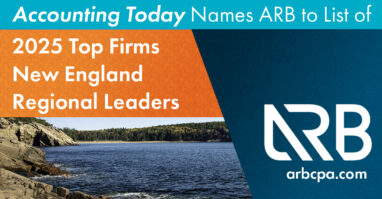Like many organizations, nonprofits (NFPs) are highly affected by the ebbs and flows of the economic climate, often making it difficult to plan and allocate resources effectively. Because NFPs rely heavily on donations, grants, and government support to fulfill their missions, they are particularly vulnerable to the widespread repercussions of economic volatility. While fluctuations in financial markets and changes in donor behavior are not always predictable or avoidable, strategic foresight and planning can help ensure the continued success of the organization and its mission.
Here are a few ideas NFPs can implement to remain agile and resilient in the face of economic uncertainty and position themselves for long-term sustainability, financial success, and community impact when it comes to today’s economically challenging times.
Comprehensive Financial Planning
Economic conditions directly impact donor behavior and historical data suggests that most NFPs experience a decrease in new donors during economic volatility while existing donors continue to provide support. For this reason, fostering donor relations and strengthening the relationships within your donor base is critical to maintaining steady income during economic fluctuations. Developing a comprehensive financial plan based on realistic revenue and expense projections as well as a strategy for retaining existing donors can help ensure a steady income during uncertain times. Diversifying funding sources is also crucial, reducing reliance on any single revenue stream and spreading risk across various sources such as grants, individual donations, and corporate sponsorships.
Risk Management
Effective risk management helps organizations anticipate, predict, and strategically respond to an array of “surprises” that may arise during economic downturns, regulatory changes, and operational disruptions. By identifying areas of vulnerability and implementing appropriate controls and safeguards, organizations are better equipped to anticipate and address potential challenges before they escalate into crises. Regular monitoring and evaluation of risk management initiatives allow organizations to adapt and refine their strategies over time, ensuring ongoing resilience and adaptability in the face of evolving challenges.
Real-Time Monitoring of Data
In addition to risk management and mitigation, monitoring real-time data is imperative to making meaningful adjustments and action plans. This includes tracking the organization’s actual performance against budgeted figures, analyzing variances and trends, and periodically updating the budget to reflect new information and changing circumstances. By leveraging real-time data monitoring tools and techniques, organizations can gain immediate visibility into key performance metrics, allowing for quick identification of emerging issues and even unforeseen opportunities.
Contingency Planning
NFPs serve a vast range of causes and missions, and, therefore, the extent to which certain economic environments affect an organization is highly circumstantial and naturally varies based on its function in the community. Certain situations may spur increased demand for services, while others may trigger a stark decline in funding. Creating contingency plans that consider different scenarios for the organization’s revenue and expenses, such as best-case, worst-case, and most-likely scenarios, can help guide nonprofit leaders in their response to possible economic environments and prepare for shifts and challenges.
Understanding Reporting Requirements
Reporting accurate and relevant data to stakeholders is critical for NFPs to build trust with stakeholders, maintain legitimacy, and ultimately make the most informed decisions for growth and success. For this reason, it’s imperative to understand and prepare the necessary reporting requirements for state, federal, grantors, and donors to help sustain and grow the organization. Organizations can best ensure they are following reporting requirements by maintaining clear documentation, staying informed of regulatory updates, and conducting regular internal reviews to verify compliance with both internal reporting standards and external reporting needs.
These are just a few strategies that can help nonprofits navigate the challenges posed by economic volatility and uncertainty in today’s world. If you have questions or want to learn more about how to best ensure financial stability at your nonprofit, please reach out.

Jason LeBlanc joined ARB in 1997 and has been a principal for the firm since 2016. He is the Practice Leader for both ARB’s M&A Advisory Group and Nonprofit Advisory Services Group. Throughout his career in public accounting, Jason’s focus has been on M&A advisory services and providing accounting, compliance, and consulting services to clients in the professional services firms, nonprofit, and automotive sectors. He works extensively with organizations subject to Single Audit reporting requirements.





